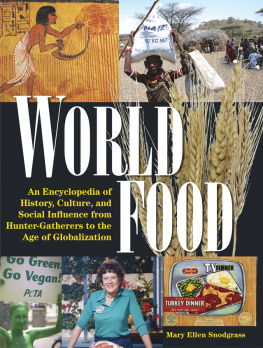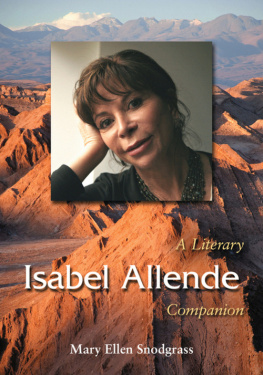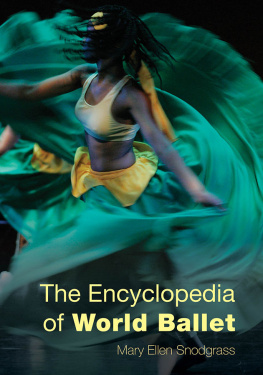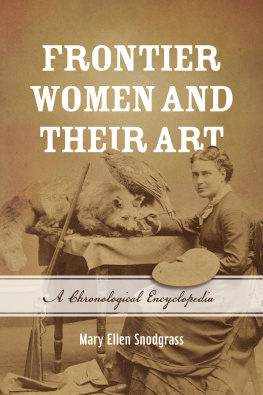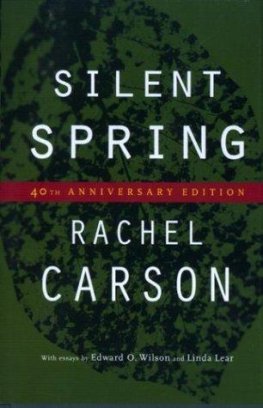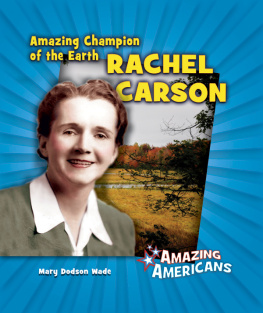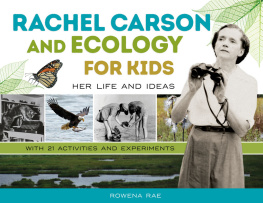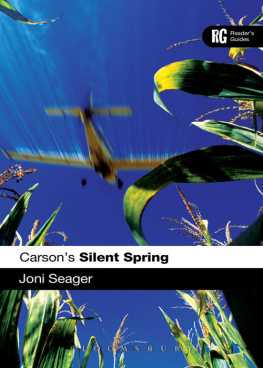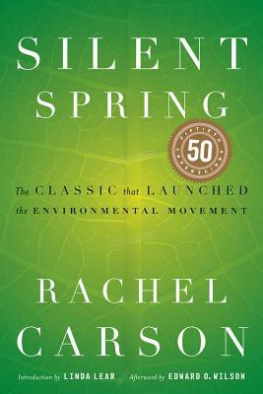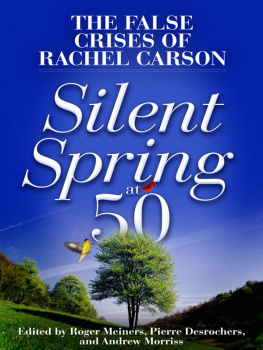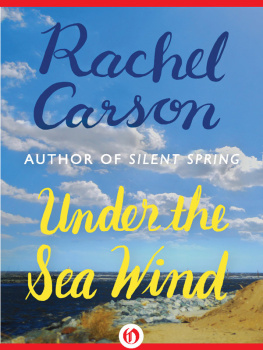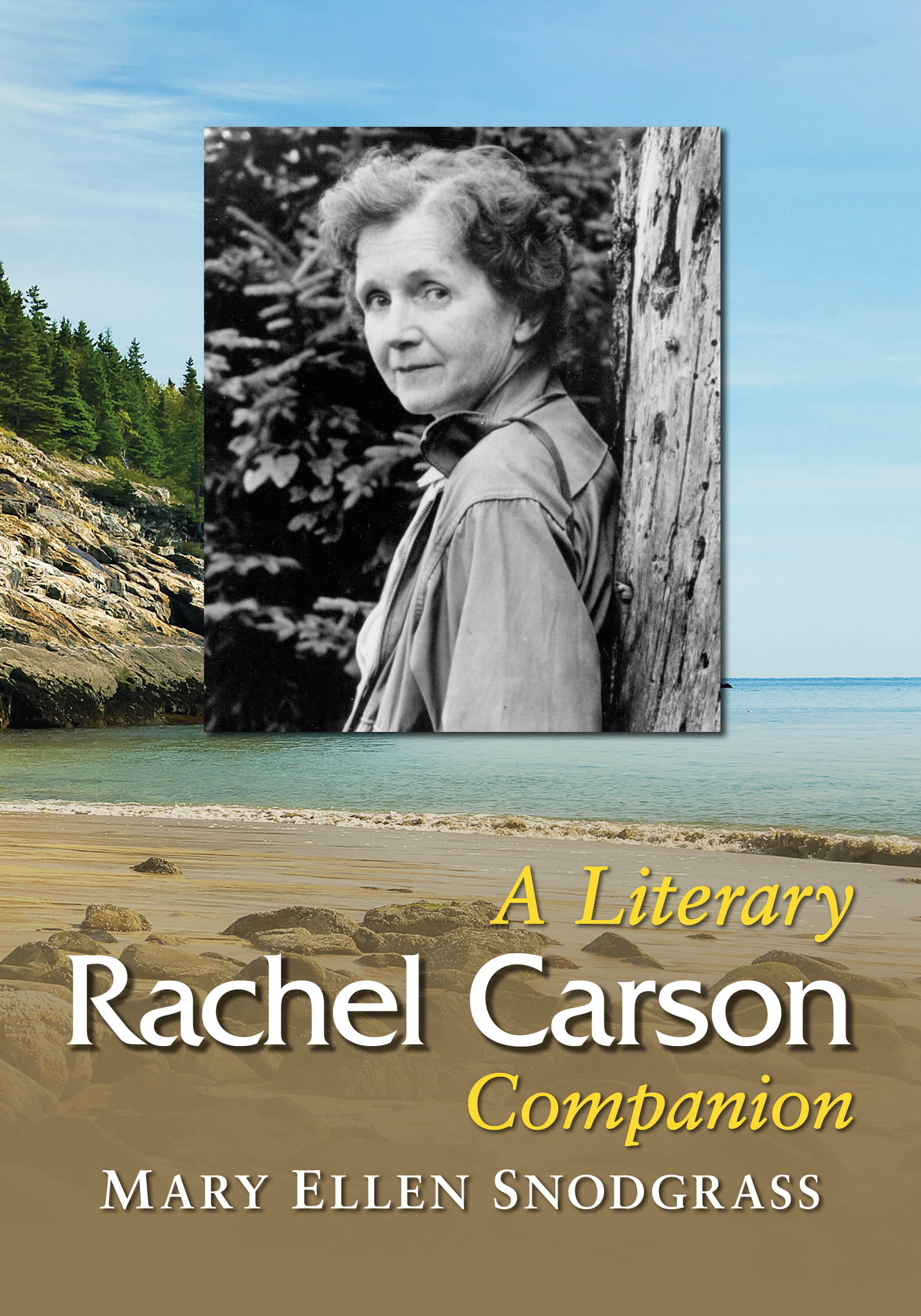L.C. Coonse, chemist, Granite Falls, North Carolina
Marsha Fanning, biology professor, Lenoir Rhyne University, Hickory, North Carolina
Martin Otts, reference librarian, Patrick Beaver Library, Hickory, North Carolina
Burl McCuiston, reference librarian, Lenoir Rhyne University, Hickory, North Carolina
Special thanks go to my publicist and consultant Joan Lail, a voice of reason in my ear.
We each have our turn at this earth.
Every human being in the world is now subjected to contact with dangerous chemicals, from the moment of conception until death.
Preface
For the environmentalist, teacher, scientist, literary historian, reviewer, and feminist reader, Rachel Carson: A Literary Companion presents the themes and messages of a serious biologist endowed with reverence for life. The 107 alphabetically arranged topics cover her major essays and orations along with commentary on critical response and congressional testimony. Individual subjectsfish, waterfowl, land, eels, birds, whales, sea, mammals, wetlands, waterwayslocate insights into areas of nature that dominated her laboratory and field research.
Specific phenomenawind, temperature, tides, topography, fossilsidentify Rachels overview of the powers that shaped creation. ThemesWorld War II, carcinogens, sport hunting, endangered species, death, the futureinform readers of Rachels private thoughts, including fears for her own mortality. Additional entries view the authors interest in details, diction, literature, folklore, and history, especially her respect for the canon of English naturalist Charles Darwin. A detailed genealogy refutes notions that she lived the isolation and disengagement of a lone spinster rather than the high moral principles of her grandfather, Irish-American minister Daniel McLean.
Glossing specifies 198 terms and phrases that attest to Rachels expertise, as with these topical examples:
abbreviations Ce AEC, NAS, CCC, FIFRA, I, Sr
anatomy macerate, Krebiozen, metabolite, germ plasm, evisceration, enzyme, cortin, mesentery, coracoid process
chemical terms cobalt, radioiodine, polysaccharide, purpurin, radioisotope, hydrocarbon
descriptors adipose, atrophy, diurnal, ichthyological, obsolescence, sessile, vitreous, phosphorescence, serrate, viviparous, lenticular, crepuscular, commensal
fauna grilse, opercula, poult, radula, ambergris, brant, eyrie, guano, milt, crustacea, cochineal, foraminifera, capris, byssus, copepod, spelt
flora graminoid, stipe, phaeocystis, understory, chara, duff, rock tripe, lichen, inflorescence, holdfast, chlorophyll, glasswort, diatom, buck brush
history Laurentian Era, Cambrian Era, Silurian, trilobite, nummulites, Mohorovicic discontinuity, alchemy
scientific terms echogram, dynamometer, toxicology, mitosis, ultraviolet light, mitochondria, nanocurie, necrosis, protoplasms, mutagenic, synthesis, vector, sub stratospheric, symbiosis, phosphorylation, monograph, atomic fission, hydrophone, fallout, echogram, back siphonage
seafaring terms beam to the wind, dory, haul seine, neap tide, winch, cull, derrick, gunwales, lee, Tonger, fathom, brush weir
topographical terms zonda, fallow, humus, freshet, gneiss, ilmenite, marl, rutile, monadnock, tundra, Oyashio, redd, spindrift, moraine, foehn wind, continental margin, chinook, estuary, biosphere, convection
A glossary of terms found in Rachels work is provided in the first appendix; for discussion, research, and writing, the appendix A Guide to Writing, Art, and Research Topics suggests 17 ideas for glossing, speech topics, biographical and historical background, comparative literature, and education. A bibliography of primary and secondary sources, both print and electronic, precedes the index, which points readers to fundamental titles, issues, and cultural and scientific subjects, particularly presidents and congressional acts. The overall work explicates and honors Rachel Carson as an ethicist for all times.
Introduction
A model of female persistence and commitment at a time when women counted for little in academe or government, Rachel Louise Carson turned a career in biology into worldwide fame in ecology. Although biographers tend to reduce her writings to a few major titles, she authored influential newspaper articles, essays on food from the sea, correspondence with scientists, book reviews, speeches, and testimonies to legislative authorities. Her works demonstrated a patient humility with the power-hungry military-industrial complex, which sought license to churn out contaminants that threatened life on earth. Ironically, her existence depended on radiation treatments for breast and bone cancer while she concealed her declining health from the public and continued making inroads against a dire planetary threat from atomic power and biocides.


